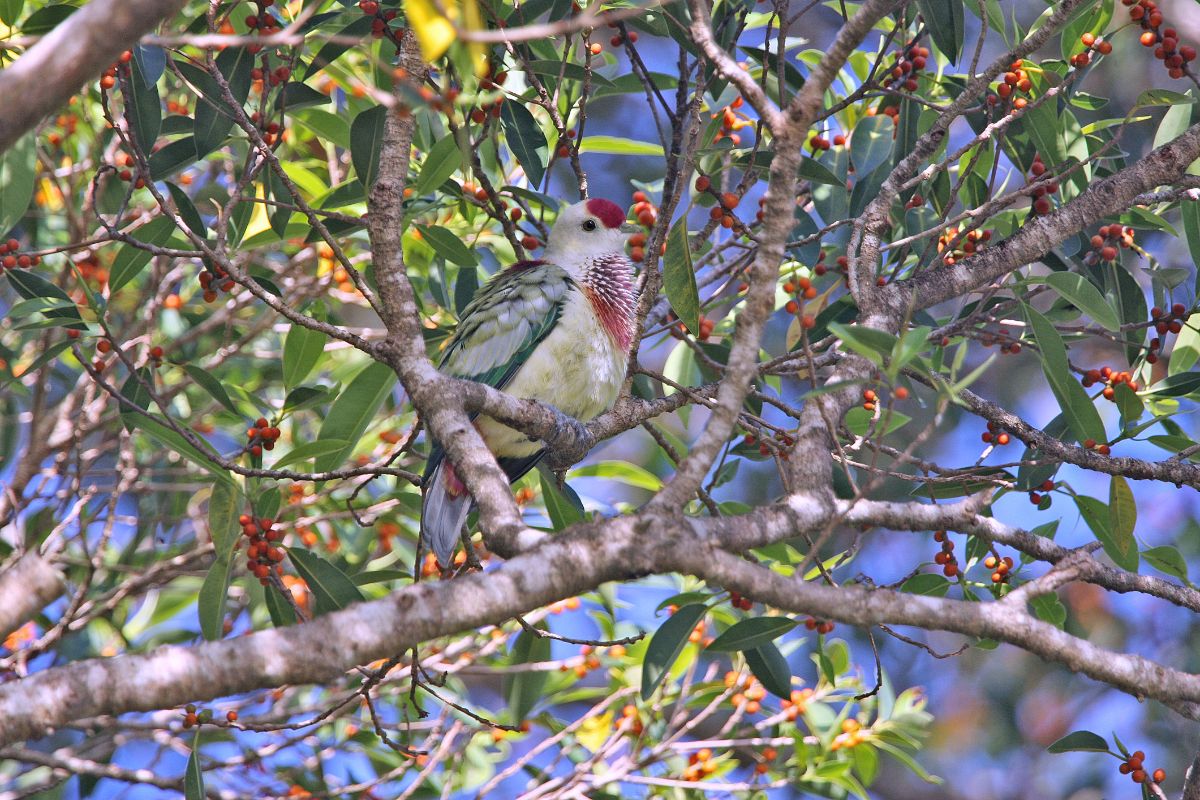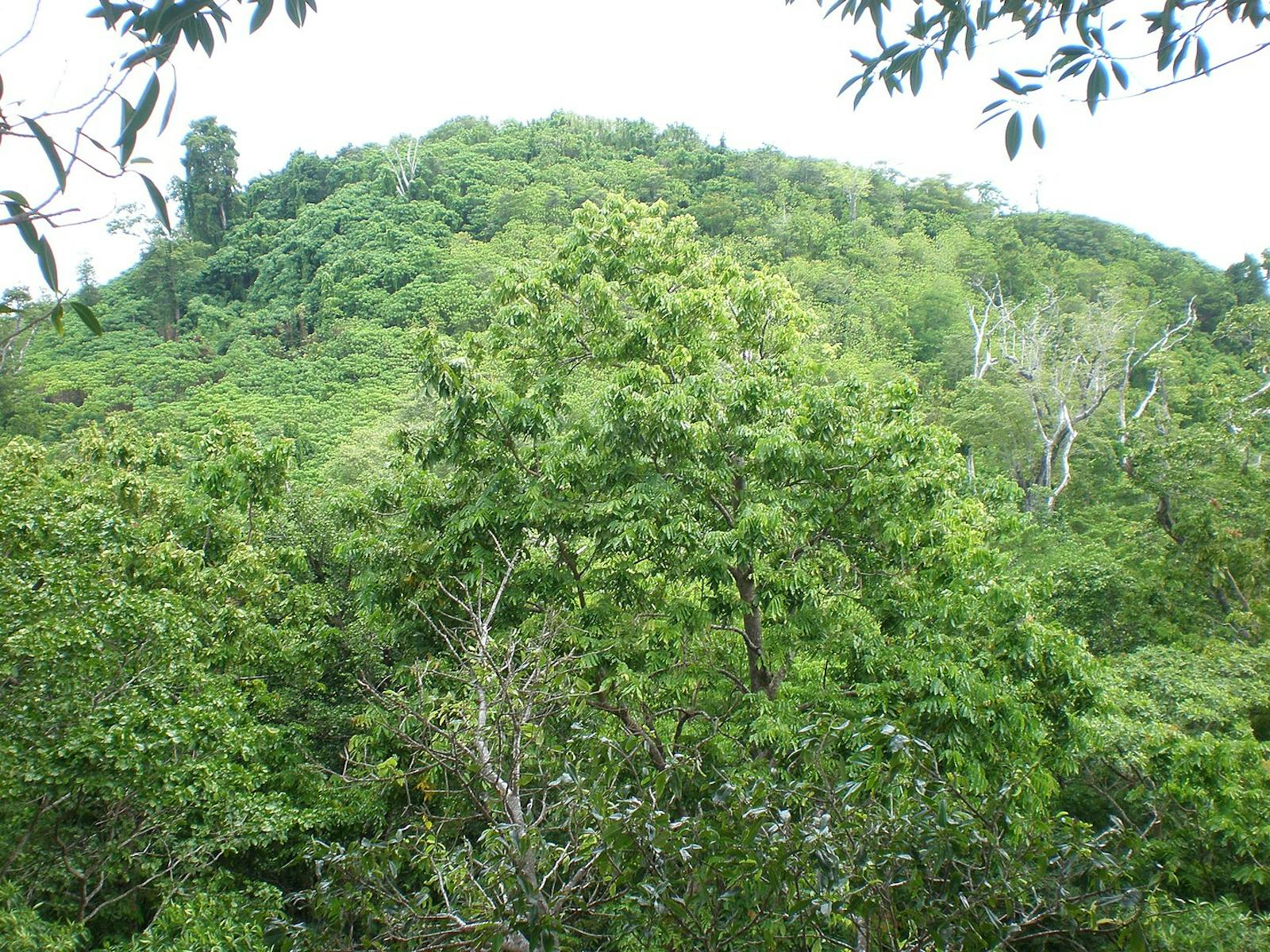Samoan Tropical Moist Forests
The ecoregion’s land area is provided in units of 1,000 hectares. The conservation target is the Global Safety Net (GSN1) area for the given ecoregion. The protection level indicates the percentage of the GSN goal that is currently protected on a scale of 0-10. N/A means data is not available at this time.
Bioregion: Samoa & West Polynesian Tropical Islands (OC5)
Realm: Oceania
Ecoregion Size (1000 ha):
310
Ecoregion ID:
629
Conservation Target:
52%
Protection Level:
2
States: Samoa, American Samoa
Samoan forests are home to two of the world’s most unusual birds. The critically endangered manumea (or tooth-billed pigeon) endemic to the Samoan forests, with a large, curved, and toothed bill uncommon of pigeons evolved to open hard rainforest fruits. The mewing song of the ma’oma’o honeyeater, which sounds like cats, is among the most unearthly on the planet.
Samoa consists of a chain of 14 volcanic islands located 600 km east of Fiji. The Western Samoan islands of Savai’i and ‘Upolu make up 90% of the land area. Lowland, montane, and cloud forest cover these volcanic islands that reach up to 1,858 m. Lowland rain forest trees include Diospyros, Calophyllum, Dysoxylum, Pometia, Planchonella, Syzygium, and Myristica. Montane forests support Dysoxylum, Syzygium, Weinmannia, Canarium, and Astronidium. Cloud forest is found above 650 m with tree genera, such as Reynoldsia, Weinmannia, and Dysoxylum, as well as Cyathea tree ferns.
Samoa support 536 species of flowering plants with about 28% endemism. Many plants are restricted to single islands, including many of the over 100 orchid species. Thirty-seven land birds―honeyeaters, pigeons, white-eyes―occur in the forests, with 84% found nowhere else. The Samoan flying fox (bat) often flies in the day foraging fruit, a behavior found on remote islands with few original predators. Geckos, skinks, and the Pacific boa are resident as they are on many other Pacific islands.

The flagship species of the Samoan Tropical Moist Forests ecoregion is the many-colored fruit-dove. Image credit: Creative Commons
Over 80% of lowland rain forest has been lost in Western Samoa and American Samoa. Unregulated logging and clearing for subsistence and cash crops are driving forest loss in both the lowlands and in the montane forest of the foothills. Mahogany and teak plantations, particularly on Savai’i, have cleared native forest. Introduced rats, cats, cane toads, predatory Euglandina snails, and mynah birds kill and outcompete native wildlife. Plant and invertebrate populations are also impacted by rat predation. Hunting of native pigeons, flying foxes, and coconut crabs continues to diminish their populations. Mikania micrantha and Solanum torvum are two particularly competitive invasive plants in natural habitats.
Native forests are protected in Western Samoa in the Robert Louis Stevenson Memorial Reserve/Mount Vaea Reserve (12.9 km2; disturbed lowland rain forest), Falealupo Reserve (100 km2; lowland rain forest), and in O Le Pupu Pu’e National Park (28 km2; from the top of Upolu’s Mt. Fito down to sea level). In American Samoa, the National Park of American Samoa (180 km2) protects forests on Tutuila, Ofu, and Ta’u. There are three Community Management Areas being implemented on Savai’i. Most of these parks suffer from poaching and encroachment for subsistence agriculture on their borders.
The priority conservation actions for the next decade are to: 1) further secure protection of the large block of native forest in the center of Savai’i (montane forest, cloud forest, swamp habitat), one of the top priority conservation landscapes in the South Pacific due to its size and rich biodiversity; 2) provide intensive and long-term invasive species management for remnant populations of manumea and ma’oma’o to help stabilize declining populations; and 3) expand the protected area system to encompass more complete watersheds on ‘Upolu, such as the Apia Catchments, Uafato-Tiavea forest, and the Eastern ‘Upolu Craters area.
Citations
- *Conservation International–Pacific Islands Programme, Ministry of Natural Resources and Environment, Secretariat of the Pacific Regional Environment Programme. 2010. Priority Sites for Conservation in Samoa: Key Biodiversity Areas. CI, MNRE, SPREP, Apia, Samoa. 32 pp.
- CEPF. 2007. Ecosystem Profile: Polynesia/Micronesia Biodiversity Hotspot. Critical Ecosystem Partnership Fund, Washington, DC.
- *Male T. 2018 Samoan Tropical Moist Forest. Accessed 1 June 2018 at https://www.worldwildlife.org/ecoregions/oc0112.
- Serra G. 2016. Biodiversity surveying of four KBAs in Samoa through traditional ecological knowledge Uafato-Tiavea Coastal Forest, Apia Catchment, Central Savai’i rainforest and Falealupo Peninsula. Ministry of Natural Resources and Environment, Department of Environment and Conservation, Apia, Samoa.




